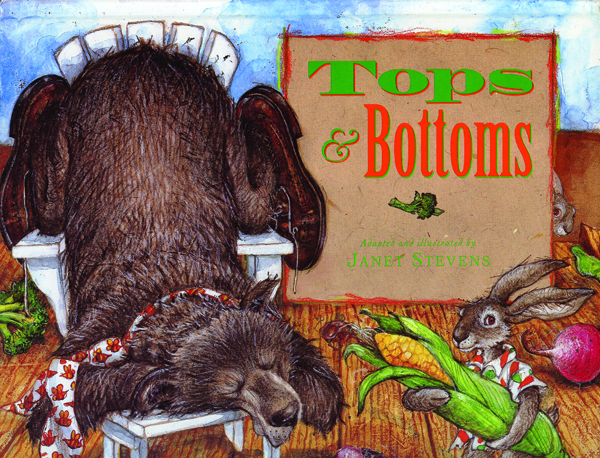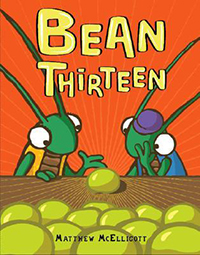The Seed Match
Students investigate where food comes from, the parts of plants that we eat, and the difference between fruits and vegetables.
Background
Lesson Activities
Recommended Companion Resources
Credits
Author
Debra Spielmaker and Rose Judd-Murray | Utah Agriculture in the Classroom
Sources
- A Seed is Sleepy by Dianna Aston
Standards
Texas Content Area Standards
-
ELA: K.110.2.b.1
Developing and sustaining foundational language skills: listening, speaking, discussion, and thinking - - oral language. The student develops oral language through listening, speaking, and discussion.
- ELA: K.1.C: The student is expected to share information and ideas by speaking audibly and clearly using the conventions of language.
-
ELA: K.110.2.b.5
Comprehension skills: listening, speaking, reading, writing, and thinking using multiple texts. The student uses metacognitive skills to both develop and deepen comprehension of increasingly complex texts.
- ELA: K.5.G: The student is expected to evaluate details to determine what is most important with adult assistance.
- ELA: K.5.H: The student is expected to synthesize information to create new understanding with adult assistance.
-
ELA: 1.110.3.b.1
Developing and sustaining foundational language skills: listening, speaking, discussion, and thinking - - oral language. The student develops oral language through listening, speaking, and discussion.
- ELA: 1.1.C: The student is expected to share information and ideas about the topic under discussion, speaking clearly at an appropriate pace and using the conventions of language.
-
ELA: 1.110.3.b.6
Comprehension skills: listening, speaking, reading, writing, and thinking using multiple texts. The student uses metacognitive skills to both develop and deepen comprehension of increasingly complex texts.
- ELA: 1.6.G: The student is expected to evaluate details to determine what is most important with adult assistance.
- ELA: 1.6.H: The student is expected to synthesize information to create new understanding with adult assistance.
-
ELA: 2.110.4.b.1
Developing and sustaining foundational language skills: listening, speaking, discussion, and thinking -- oral language. The student develops oral language through listening, speaking, and discussion.
- ELA: 2.1.C: The student is expected to share information and ideas that focus on the topic under discussion, speaking clearly at an appropriate pace and using the conventions of language.
-
ELA: 2.110.4.b.6
Comprehension skills: listening, speaking, reading, writing, and thinking using multiple texts. The student uses metacognitive skills to both develop and deepen comprehension of increasingly complex texts.
- ELA: 2.6.G: The student is expected to evaluate details read to determine key ideas.
- ELA: 2.6.H: The student is expected to synthesize information to create new understanding.
-
Math: K.111.2.b.2
Number and operations. The student applies mathematical process standards to understand how to represent and compare whole numbers, the relative position and magnitude of whole numbers, and relationships within the numeration system.
- Math: K.2.A: The student is expected to count forward and backward to at least 20 with and without objects.
- Math: K.2.B: The student is expected to read, write, and represent whole numbers from 0 to at least 20 with and without objects or pictures.
- Math: K.2.C: The student is expected to count a set of objects up to at least 20 and demonstrate that the last number said tells the number of objects in the set regardless of their arrangement or order.
-
Social Studies: 2.113.13.c.16
Social studies skills. The student communicates in written, oral, and visual forms. The student is expected to:
- Social Studies: 2.113.13.c.16.E: communicate information visually, orally, or in writing based on knowledge and experiences in social studies
-
Social Studies: K.113.11.c.14
Social studies skills. The student communicates in oral and visual forms. The student is expected to:
- Social Studies: K.113.11.c.14.C: communicate information visually, orally, or in writing based on knowledge and experiences in social studies
-
Social Studies: 1.113.12.c.17
Social studies skills. The student communicates in oral, visual, and written forms. The student is expected to:
- Social Studies: 1.113.12.c.17.C: communicate information visually, orally, or in writing based on knowledge and experiences in social studies
-
Science: K.112.2.b.2
Scientific and engineering practices. The student analyzes and interprets data to derive meaning, identify features and patterns, and discover relationships or correlations to develop evidence-based arguments or evaluate designs. The student is expected to:
- Science: K.112.2.b.2.B: analyze data by identifying significant features and patterns.
-
Science: K.112.2.b.13
Organisms and environments. The student knows that organisms resemble their parents and have structures and undergo processes that help them interact and survive within their environments. The student is expected to:
- Science: K.112.2.b.13.A: identify the structures of plants, including roots, stems, leaves, flowers, and fruits.
-
Science: 1.112.3.b.2
Scientific and engineering practices. The student analyzes and interprets data to derive meaning, identify features and patterns, and discover relationships or correlations to develop evidence-based arguments or evaluate designs. The student is expected to:
- Science: 1.112.3.b.2.B: analyze data by identifying significant features and patterns.
-
Science: 2.112.4.b.2
Scientific and engineering practices. The student analyzes and interprets data to derive meaning, identify features and patterns, and discover relationships or correlations to develop evidence-based arguments or evaluate designs. The student is expected to:
- Science: 2.112.4.b.2.B: analyze data by identifying significant features and patterns
-
Science: 2.112.4.b.12
Organisms and environments. The student knows that living organisms have basic needs that must be met through interactions within their environment. The student is expected to:
- Science: 2.112.4.b.12.A: describe how the physical characteristics of environments, including the amount of rainfall, support plants and animals within an ecosystem
 Read the book Tops and Bottoms by Janet Stevens with your students.
Read the book Tops and Bottoms by Janet Stevens with your students. Connect this seed lesson to math by reading Bean Thirteen by Matthew Mcelligott to your students. This funny story about bugs and beans combines well with math lessons on prime numbers and division.
Connect this seed lesson to math by reading Bean Thirteen by Matthew Mcelligott to your students. This funny story about bugs and beans combines well with math lessons on prime numbers and division.